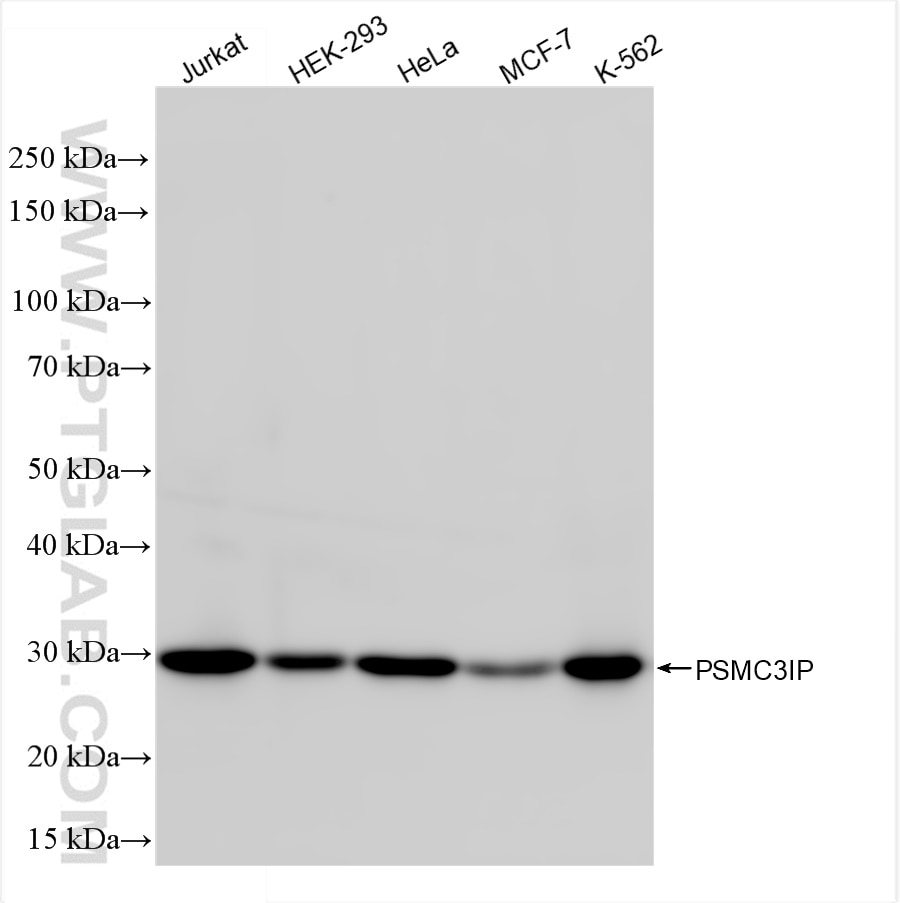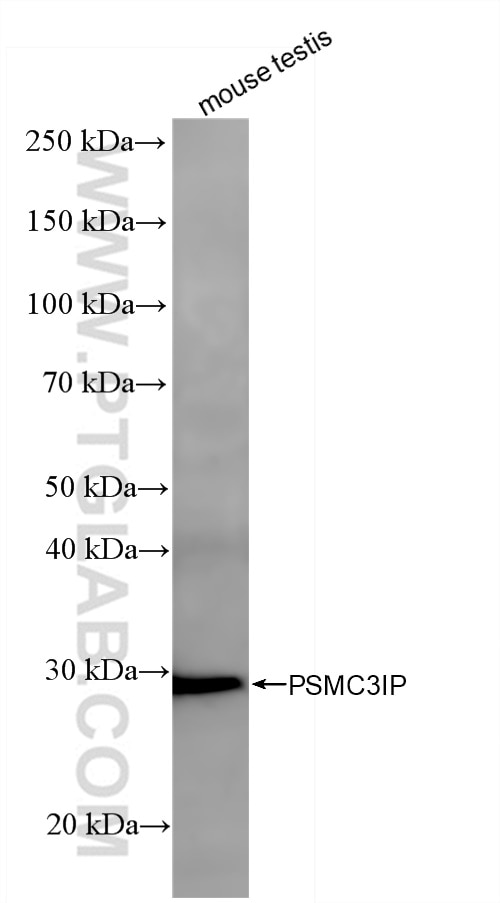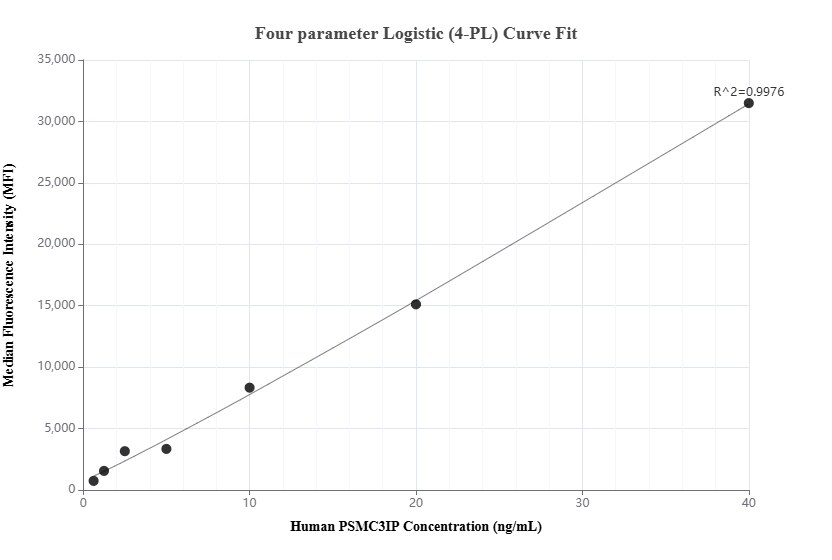PSMC3IP Recombinant antibody, PBS Only (Detector)
PSMC3IP Recombinant Antibody for WB, Cytometric bead array, Indirect ELISA
Host / Isotype
Rabbit / IgG
Reactivity
human, mouse
Applications
WB, Cytometric bead array, Indirect ELISA
Conjugate
Unconjugated
CloneNo.
242517C12
Cat no : 84934-1-PBS
Synonyms
Validation Data Gallery
Tested Applications
Recommended dilution
| Application | Dilution |
|---|---|
| It is recommended that this reagent should be titrated in each testing system to obtain optimal results. | |
Product Information
84934-1-PBS targets PSMC3IP as part of a matched antibody pair:
MP01685-1: 84934-3-PBS capture and 84934-1-PBS detection (validated in Cytometric bead array)
Unconjugated rabbit recombinant monoclonal antibody in PBS only (BSA and azide free) storage buffer at a concentration of 1 mg/mL, ready for conjugation. Created using Proteintech’s proprietary in-house recombinant technology. Recombinant production enables unrivalled batch-to-batch consistency, easy scale-up, and future security of supply.
This conjugation ready format makes antibodies ideal for use in many applications including: ELISAs, multiplex assays requiring matched pairs, mass cytometry, and multiplex imaging applications.Antibody use should be optimized by the end user for each application and assay.
| Tested Reactivity | human, mouse |
| Host / Isotype | Rabbit / IgG |
| Class | Recombinant |
| Type | Antibody |
| Immunogen | PSMC3IP fusion protein Ag1883 相同性解析による交差性が予測される生物種 |
| Full Name | PSMC3 interacting protein |
| Calculated molecular weight | 25 kDa |
| Observed molecular weight | 24-29 kDa |
| GenBank accession number | BC008792 |
| Gene symbol | PSMC3IP |
| Gene ID (NCBI) | 29893 |
| Conjugate | Unconjugated |
| Form | Liquid |
| Purification Method | Protein A purification |
| Storage Buffer | PBS Only |
| Storage Conditions | Store at -80°C. |
Background Information
PSMC3IP, also called HOP2, encodes a protein that functions in meiotic recombination. It is a subunit of the PSMC3IP/MND1 complex, which interacts with PSMC3/TBP1 to stimulate DMC1- and RAD51-mediated strand exchange during meiosis. The protein encoded by this gene can also co-activate ligand-driven transcription mediated by estrogen, androgen, glucocorticoid, progesterone, and thyroid nuclear receptors. Mutations in this gene cause XX female gonadal dysgenesis.




